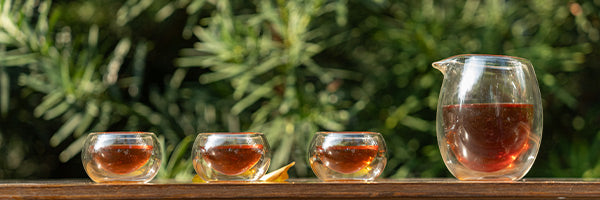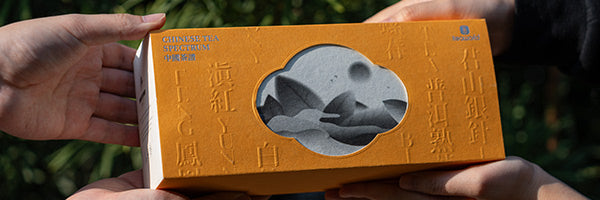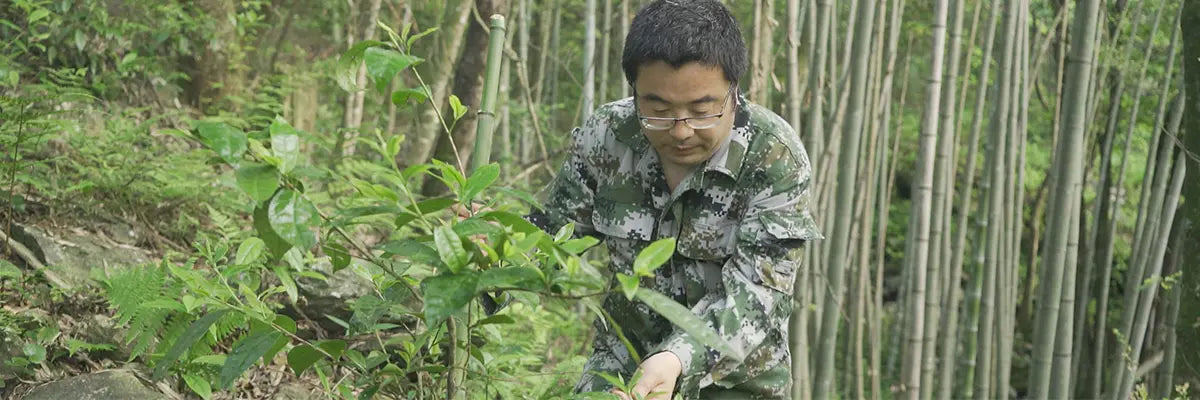Введение
Чай «Колодец дракона», также известный как чай Лунцзин, считается лучшим зеленым чаем и одним из самых известных китайских зеленых чаев , часто рассматривается как лучший зеленый чай для питья . Он имеет давнюю историю, почитаем за свой нежный, сладкий вкус, освежающий аромат и культурное значение. Несмотря на широкую доступность, выбор лучшего зеленого чая Лунцзин может быть сложной задачей из-за различных факторов, влияющих на его качество. Пять ключевых элементов, определяющих качество зеленого чая Лунцзин, — это сорт сбора, время сбора, сорт чайного дерева, происхождение и то, сделан ли он вручную или машинным способом.
В этой статье мы рассмотрим эти пять факторов и объясним, как они влияют на вкус и качество зеленого чая Лунцзин, что поможет вам принять обоснованное решение при выборе лучшего чая по вашему вкусу и бюджету.
- Урожайность: понимание визуальных и вкусовых характеристик
Сорт урожая зеленого чая Лунцзин определяется нежностью, целостностью и состоянием чайных листьев во время сбора, что напрямую влияет на качество и вкус чая. Вот основные сорта урожая зеленого чая Лунцзин:
- Вкус полной почки Лунцзин: полная почка представляет собой самую нежную и драгоценную форму чая Лунцзин . Для производства всего одного фунта (около 500 г) лучшего зеленого чая Лунцзин требуется около 56 000 почек. Эти почки собираются вручную ранней весной и первыми появляются на чайном кусте. Они обладают тонким, сладким и маслянистым вкусом с нотками каштана и насыщенным ароматом. Ярко выражены цветочные ноты орхидеи, а чай обладает высокой естественной сладостью без какой-либо горечи или терпкости. Чайный ликер легкий и яркий, с длительным послевкусием, что делает его очень востребованным среди ценителей. Это действительно один из лучших зеленых чаев и часто считается лучшим зеленым чаем для питья среди китайских зеленых чаев .
- Одна почка с одним или двумя начальными листьями Лунцзин (Одна почка, один или два листа) : на этом уровне чай имеет почку с одним или двумя листочками, которые только начинают раскрываться. Вкус более крепкий, чем у полной почки, с балансом сладости и легкой терпкости. Аромат свежий, напоминающий весенний луг. Чайный ликер ярко-зеленый, с чистым и освежающим вкусом.
- Одна почка с двумя листьями Лунцзин (Одна почка, два листа) : этот сорт состоит из почки с двумя полностью развернутыми листьями. Профиль вкуса более зрелый, с более сильным растительным вкусом и легким жареным ароматом. Цветочный аромат все еще присутствует, но дополняется более выраженным запахом листьев. Чайный настой более глубокий зеленый, с более полным телом и более сложной структурой.
- Одна почка с тремя листочками (One Bud, Three Leaves) : Зеленый чай Лунцзин с почкой и тремя листочками имеет более выраженный и насыщенный вкус. Вкус смелый, с более заметным растительным привкусом и ноткой горечи. Аромат больше склоняется к зеленым и листовым нотам, а чайный настой темнее, обеспечивая более крепкие и полные ощущения.
- Механически собранный зеленый чай Лунцзин (Knife-Cut Longjing Green Tea) : Механически собранный зеленый чай Лунцзин, часто называемый «Knife-Cut» из-за метода сбора, включает в себя более крупные листья и больше чайных стеблей. Этот чай, как правило, имеет более нейтральный вкус с более сильной терпкостью. Аромат может быть более землистым и листовым, а чайный настой темнее, с более интенсивным вкусом.
При выборе более высокие сорта урожая (более короткие листья) обычно указывают на более высокий сорт зеленого чая Лунцзин, но цена может быть высокой. Если вы предпочитаете сладкий, прозрачный и нежный чай, выбирайте чай из всех почек. Однако, если вы ищете баланс вкуса и аромата без тонких нюансов и более бюджетный вариант, рассмотрите вариант с одной почкой и двумя листьями зеленого чая Лунцзин.
2. Время сбора урожая: значение раннего и позднего сбора урожая
Что это такое
Время сбора чая является одним из важнейших факторов, определяющих качество зеленого чая Лунцзин. Ранние весенние урожаи, особенно те, что до праздника Цинмин (5 апреля), ценятся очень высоко, в то время как более поздние урожаи, особенно те, что после праздника зернового дождя (20 апреля), считаются более низкого качества.
Как это влияет на вкус
- Pre-Qingming (Mingqian) te a : Чай, собранный до Цинмина, считается самым качественным из-за идеальных условий выращивания в этот период. Прохладная весенняя погода способствует более медленному росту, позволяя листьям развить больше аромата и сложности. Зеленый чай Mingqian Longjing имеет свежий, нежный вкус с выраженными сладкими и ореховыми нотками. Аромат более цветочный, а чайный настой легкий и яркий.
- Чай до зерен дождя (Юй Цянь) : Чай, собранный между Цинмином и зерен дождя, по-прежнему имеет высокое качество, но немного менее нежен, чем чай Минцянь. Профиль вкуса более растительный и травянистый, с небольшим увеличением терпкости. Хотя он может не иметь той же утонченности, что и чай до Цинмина, чай Юй Цянь часто более доступен и по-прежнему предлагает превосходное качество для ежедневного употребления.
- Послезерновой дождь и летний чай : чай, собранный после зернового дождя и летом, обычно считается более низкого качества. Более теплая погода вызывает более быстрый рост листьев, что приводит к более толстым, более волокнистым листьям, которые производят более сильный, более терпкий вкус. Зеленый чай Лунцзин, собранный летом, как правило, не имеет сладкого, мягкого характера более ранних урожаев и может иметь более выраженную горечь.
3. Разновидности чайного дерева: старинные и современные сорта
Что это такое
Для производства зеленого чая Лунцзин используются несколько сортов чайного дерева, каждый из которых предлагает различные вкусовые профили и уровни качества. Три основных сорта — это реликвия Лунцзин (также известная как сорт Лунцзин Цюньти), Лунцзин № 43 и Вуньуцзао.
Как это влияет на вкус
- Longjing Qunti (реликтовый сорт) : это оригинальный сорт, выращенный из семян, используемый в традиционном производстве зеленого чая Longjing. Чаи, изготовленные из этого сорта, известны своим сложным, многослойным вкусом, предлагающим идеальный баланс сладости, ореховости и умами. Чай имеет густое ощущение во рту с мягким, длительным послевкусием. Любители чая часто ищут зеленый чай Longjing, изготовленный из этого сорта, из-за его богатого, аутентичного вкуса.
- Longjing #43 : Это клонированный сорт, полученный из реликвии Longjing Qunti. Он был выращен из-за более быстрого роста и более высокой урожайности, что сделало его более коммерчески выгодным. Хотя Longjing #43 все еще считается чаем хорошего качества, он имеет тенденцию иметь более легкий, менее сложный вкус по сравнению с реликвией. Чай часто немного более цветочный, но ему не хватает глубины традиционного зеленого чая Longjing, выращенного из семян.
- Wuniuzao : Этот сорт традиционно не ассоциируется с зеленым чаем Лунцзин и обычно используется для недорогих чаев. Wuniuzao созревает раньше других сортов, что приводит к получению чая, который часто менее утончен, с более плоским, одномерным вкусом. Вкус менее сладкий и более растительный, часто с немного горьковатым послевкусием.
- Происхождение: важность терруара и преемственности мастерства приготовления чая
Зеленый чай Xihu Longjing, известный своим «зеленым цветом, насыщенным ароматом, мягким вкусом и красивой формой», считается лучшим среди десяти известных чаев Китая. Самым известным из них является зеленый чай West Lake Longjing. Основные районы производства этого чая расположены в районе Западного озера в Ханчжоу, включая пять основных районов производства: Лев, Дракон, Облако, Тигр и Слива.
Регион, где выращивается зеленый чай Лунцзин, оказывает значительное влияние на его вкус, аромат и общее качество. Хотя зеленый чай Лунцзин в основном производится в провинции Чжэцзян, не все регионы равны по качеству.
Как это влияет на вкус
Различия во вкусе зеленого чая Лунцзин из разных регионов производства в первую очередь обусловлены географической средой, климатическими условиями, характеристиками почвы и мастерством изготовления чая.
- Район производства Западного озера Лунцзин : Зеленый чай West Lake Longjing славится своим «зеленым цветом, насыщенным ароматом, мягким вкусом и красивой формой». Чай из района производства West Lake, особенно из пяти основных районов производства Lion Peak, Dragon Well, Yunqi, Tiger Run и Meijiawu, имеет плоскую, гладкую и прямую, заостренную форму, нежный зеленый и блестящий цвет, свежий и освежающий аромат, свежий и сладкий вкус, яркий цвет супа и нежную и цветущую основу листа. Аромат зеленого чая West Lake Longjing описывается как «аромат цветка бобов», тонкий, далекий и насыщенный аромат, похожий на цветочный аромат весенних бобовых растений или свежий аромат свежего соевого молока.
- Зона производства Цяньтан Лунцзин: Зеленый чай Лунцзин из зоны производства Цяньтан, включая нынешние административные районы Сяошань, Биньцзян, Юйхан, Фуян, Линьань, Тунлу, Цзяньдэ и Чуньань в городе Ханчжоу, имеет почвенные условия, которые также подходят для роста чайных растений, но немного отличаются от зоны производства Западного озера, что может привести к небольшим различиям в форме, цвете и аромате чая. Качество и вкус зеленого чая Лунцзин из зоны производства Цяньтан могут немного уступать таковым из зоны производства Западного озера, но он по-прежнему сохраняет основные вкусовые характеристики зеленого чая Лунцзин и, как правило, более доступен.
- Зона производства Юэчжоу: Зеленый чай Лунцзин из зоны производства Юэчжоу, включая нынешние административные районы города Шаосин, Юэчэн, Синьчан, Шэнчжоу, Чжуцзи и некоторые волости в Шанъюй, Паньань, Дунъян и Тяньтай, имеет богатую минералами почву и обильный запас воды. Эти условия делают листья зеленого чая Лунцзин, произведенные в зоне производства Юэчжоу, полными и густыми, с более глубоким цветом. Аромат зеленого чая Юэчжоу Лунцзин может быть более интенсивным, с цветочным или каштановым ароматом, а вкус может быть более насыщенным.
- Lishui Production Area Longjing : Как один из основных районов производства зеленого чая Longjing, Lishui расположен на юго-западе провинции Чжэцзян, с непрерывными горами и недалеко от горы Уи, имея схожую климатическую среду с горой Уи. История посадки чая в районе Lishui может быть прослежена до династии Тан. После сотен лет осадков и наследования была сформирована полная экосистема зеленого чая Longjing и мастерство изготовления чая. Lishui Longjing Green Tea использует местный характерный сорт «Западное озеро Сяодао» с его нежными и пухлыми почками и высоким содержанием воды, что обеспечивает свежий и освежающий вкус чая. Процесс приготовления чая следует традиционному методу зеленого чая Longjing, включая тщательный сбор, уничтожение зелени и обжаривание, стремясь сохранить естественный аромат и цвет чая. Зеленый чай Lishui Longjing имеет свежий и стойкий цветочный и фруктовый аромат в сочетании с легким и насыщенным вкусом, который может проявляться как при заваривании, так и при холодном заваривании. Зеленый чай Lishui Longjing с его более низкой ценой, многолетним и традиционным опытом производства и аутентичным вкусом стал хорошим выбором высококачественного зеленого чая Longjing в повседневной жизни.
- Иностранные производственные районы: Такие районы, как Гуйчжоу и Юньнань, также производят зеленый чай Лунцзин. Географическая среда сильно изменилась, а история мастерства изготовления чая недостаточна, что делает вкус зеленого чая Лунцзин в этих районах совершенно другим, чем в районе производства Чжэцзян. Аромат и вкус зеленого чая Лунцзин из зарубежных производственных районов могут быть более интенсивными, а иногда он может иметь более очевидный горький привкус. Однако из-за более доступной цены также существует большой рынок.
5. Ручная работа против машинной: мастерство в каждом глотке
Что это такое
Метод обработки зеленого чая Лунцзин — ручной или машинный — может существенно повлиять на вкус, текстуру и аромат конечного продукта.
Как это влияет на вкус
- Ручной работы зеленый чай Лунцзин : традиционный, ручной работы зеленый чай Лунцзин тщательно изготавливается опытными мастерами чая, которые обжаривают листья небольшими партиями. Этот медленный, трудоемкий процесс позволяет лучше контролировать температуру и время, гарантируя, что листья приобретут насыщенный ореховый вкус со сладкими цветочными оттенками. Чай более гладкий, с более утонченной текстурой и длительным послевкусием. Сложный процесс ручного скручивания и сушки гарантирует, что каждый лист сохранит свою естественную форму и цвет, что способствует визуально привлекательному чаю.
- Машинно-сделанный зеленый чай Лунцзин : хотя и более экономически выгодный, машинно-сделанный зеленый чай Лунцзин не имеет нюансов и глубины вкуса, присущих чаям ручной работы. Автоматизированный процесс может привести к неравномерной обжарке, что приводит к получению чая, который часто бывает более терпким или горьким. Текстура может быть более грубой, а чайный настой обычно темнее, с менее изысканным вкусом. Тем не менее, машинно-сделанный чай все еще может стать хорошим вариантом для тех, кто ищет более доступный по цене зеленый чай Лунцзин для ежедневного потребления.
Заключение: как выбрать зеленый чай Лунцзин
Выбор правильного зеленого чая Лунцзин в конечном итоге сводится к балансу ваших предпочтений по вкусу, происхождению и мастерству с вашим бюджетом. Если вы ищете чай со сладкими, ореховыми и цветочными нотками, выбирайте высококачественный, вручную собранный чай из реликвийного сорта зеленого чая Лунцзин, выращенного в регионах Западного озера или Шифэн и собранного до Цинмина. Если вы более ограничены в средствах, но все же хотите хорошего качества, чай из периферийных регионов или собранный позже в сезон может предложить отличную ценность.
Для действительно первоклассного опыта, ищите чай Longjing Green Tea, сделанный вручную, где мастерство чайного мастера выявляет весь спектр вкусов и ароматов. Чай, сделанный машинным способом, хотя и менее изысканный, все равно может быть отличным вариантом для тех, кто пьет его каждый день и ценит классический вкус чая Longjing Green Tea без высокой цены.
В конечном итоге, понимание того, как каждый из этих факторов влияет на вкус, текстуру и аромат зеленого чая Лунцзин, позволит вам принять более обоснованное решение и насладиться наилучшими впечатлениями от чаепития.












































































